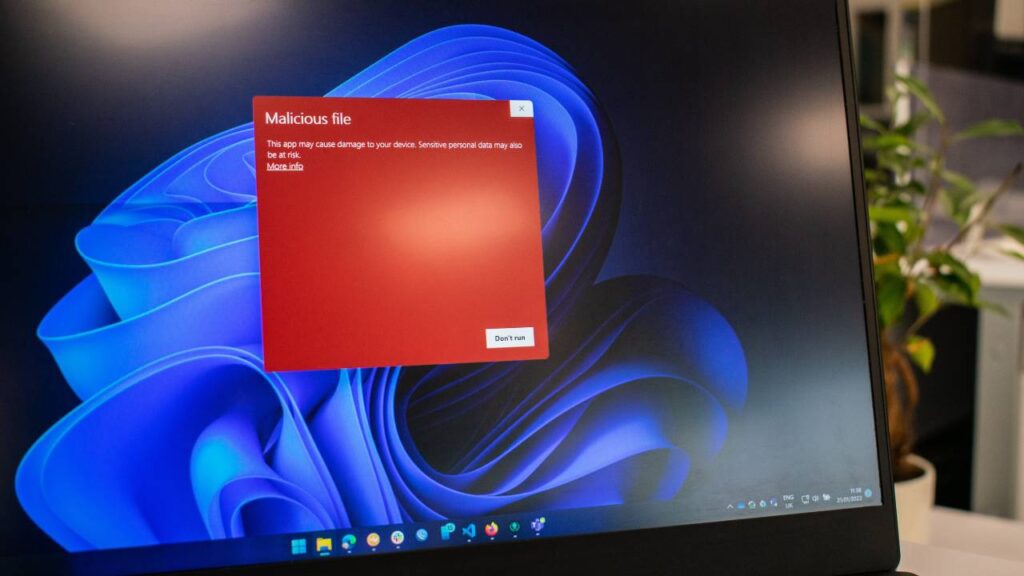From Clicks to Caution: Enhancing Your Cyber Awareness
In the contemporary digital era, our increasing dependence on online platforms has exposed us to a myriad of cyber threats, from phishing attempts to ransomware attacks. The urgency of cyber awareness cannot be overstated as it’s vital for protecting personal information and digital assets.
This article offers key insights into bolstering your cyber awareness and provides strategies for identifying and circumventing potential cyber threats. By enhancing your awareness, you not only shield your digital identity but also fortify the broader online ecosystem. Delve in to navigate the digital realm with confidence and champion a culture of cyber safety.
Understanding Cyber Threats

In today’s digital age, it is crucial to be aware of various cyber threats that can compromise your online safety. Familiarising yourself with common cyber threats will allow you to take the necessary precautions to safeguard your information. Here is a brief overview of some notable cyber threats that could affect you and your digital devices.
Ransomware is a type of malware that encrypts your files and demands a ransom, usually in cryptocurrency, to restore access. This cyber threat is often delivered through phishing emails, exploiting vulnerabilities in software, or via malvertisements on websites.
Phishing attacks are a form of social engineering where cybercriminals impersonate trustworthy entities to deceive you into revealing sensitive information, often through emails. One example of common phishing attacks involves tricking you into entering your login credentials on a fake website, allowing the attacker to gain access to your accounts.
Malware is a general term for malicious software that infiltrates your computer or device, often without your knowledge. These can cause harm by stealing sensitive information, corrupting data, or taking control of resources. Malware can be delivered through multiple channels, including emails, software downloads, or even contaminated USB drives.
Data breaches occur when unauthorised individuals gain access to sensitive information, often through hacking, social engineering attacks, or exploiting vulnerabilities in an organisation’s systems. Data breaches can result in significant financial and reputational damage, both to individuals and companies.
Social engineering attacks are tactics used by cybercriminals to exploit human psychology and manipulate you into divulging valuable information or taking actions that compromise your security. These attacks often use trust, fear, or urgency as key drivers to motivate you to act against your best interests.
Enhancing Cyber Awareness
In today’s digital realm, the significance of enhancing cyber awareness has never been more paramount. It’s essential in safeguarding your confidential data. Interestingly, a large part of cybersecurity revolves around security awareness. This emphasis stems from the fact that a vast majority of cyber threats target the human factor. By amplifying your knowledge in cybersecurity, you are better positioned to discern potential threats and act promptly.
As we mark Cyber Security Month, the spotlight falls on the importance of raising awareness among employees. Introducing regular training sessions becomes imperative. These sessions should be oriented around frequent cyber threats, the principles of secure browsing, and the ideal methods for storing and sharing data safely. By adopting such a strategy, you ensure that your entire team remains in sync with the advancements in cybersecurity and the broader landscape of best practices for business security.
Moreover, keeping your software up-to-date is paramount. This includes not just your operating systems but also web browsers and anti-virus programmes. Updated software guarantees that your devices are fortified with the most recent security patches to combat identified vulnerabilities. Another commendable step in strengthening your digital armour is the integration of multi-factor authentication (MFA) for any procedure that requires accessing sensitive data or critical resources. MFA bolsters your defence by mandating multiple forms of identity confirmation prior to providing access.
Additionally, the importance of strong password hygiene can’t be overstressed. It’s advisable to employ robust, distinct passwords for various accounts. Reusing the same password across multiple platforms is a perilous practice, and periodic changes to these passwords can deter potential hackers. Lastly, a word of caution about unsolicited emails – it’s wise to approach them with scepticism. Especially those bearing attachments or embedded links. Phishing attacks, which are increasingly becoming more sophisticated, typically harness social engineering strategies to deceive individuals into parting with vital information or credentials.
Security Awareness Training

An important aspect of enhancing your cyber awareness is by participating in security awareness training. This type of training aims to educate you and your team about the risks and potential vulnerabilities of online interactions, ensuring that all members are well-prepared to tackle potential threats.
One effective method of delivering cybersecurity awareness training is through simulations and games. These interactive experiences can help you learn about the latest cyber threats and how to respond accordingly, while also providing engaging and enjoyable activities. By partaking in realistic scenarios, you’ll be able to recognise and react effectively to real-life cyberattacks.
To create an effective program, tailor your security awareness training to your organisation’s specific needs. This means understanding the unique risks faced by your organisation and ensuring that the training material covers those areas thoroughly. Periodically updating your cybersecurity training will prevent it from becoming obsolete.
A successful security awareness programme must encompass several crucial components. Firstly, it should have comprehensive and pertinent content that resonates with the target audience. The teaching methods should not only be engaging but also interactive, ensuring active participation and retention. It’s vital to highlight practical applications, offering real-world examples that make the theoretical knowledge relatable and actionable.
In tune with the ever-evolving cyber landscape, the materials should undergo regular updates to remain abreast of the most recent threats and trends. Lastly, the programme should be versatile in its delivery, incorporating accessible formats such as e-learning modules, hands-on training, and sessions steered by experienced mentors.
Understanding and Managing Risks
In today’s digital age, enhancing your cyber awareness is more essential than ever. Integral to this is understanding and managing the risks associated with your online activities. As you venture into the online world, you may encounter challenges and vulnerabilities, often underpinned by the psychology of risk, which can lead to severe consequences if not addressed appropriately.
Firstly, it’s crucial to identify potential risks and the challenges they pose. For example, phishing attacks, ransomware, and data breaches can exploit various vulnerabilities in your online systems. Be aware of how these threats may impact your daily activities, such as accessing sensitive information or making financial transactions.
Stay vigilant about potential human errors that can lead to vulnerabilities. Simple mistakes, such as reusing weak passwords or clicking on suspicious links, can put your data at risk. Implementing proper training and education for yourself and employees can minimise these risks and improve overall cyber awareness.
Risk management is essential in addressing and handling these challenges. Begin by assessing your current security measures and work to identify areas that need improvement. This may include updating software, implementing multi-factor authentication, and backing up critical data.
When it comes to managing risks in today’s digital landscape, several vital steps should be at the forefront of your strategy. Begin by ensuring your operating system, software, and anti-virus programs are updated regularly to combat the latest vulnerabilities. Moreover, it’s essential to establish strong and distinct passwords for each of your accounts, making a point to alter them at periodic intervals.
Exercising caution online is paramount; avoid clicking on links that seem unfamiliar and refrain from downloading attachments unless you’re certain of the source. A pivotal measure for added security is employing encryption tools, which will safeguard your sensitive data, regardless of whether it’s stored online or offline. And, as a foundational security principle, always back up your crucial data, taking care to store it in a secure environment.
Building a Security Culture

Developing a security culture within your organisation is crucial in ensuring a proactive approach to information security. By promoting a pervasive understanding of the risks and threats posed by cyber criminals, you can foster an environment where everyone in your company is engaged in protecting sensitive data.
Start by establishing a culture of continuous learning and improvement. Encourage your team members to stay informed about the latest vulnerabilities, threats, and technology developments. Offer ongoing training, workshops, and resources to help them enhance their cyber awareness.
Make information security a priority by embedding it into your company values. Designate a security champion or team to lead the charge, and provide them with the resources needed to drive engagement across the company. This includes incorporating information security awareness into performance objectives, company meetings, and strategic planning.
Ensure that your technology infrastructure is up to date and resilient against attacks. Regularly review and update your information security policies and procedures to reflect the evolving threat landscape. Implement strong access controls, encryption, and authentication methods to protect sensitive data.
To maintain a strong security culture, encourage open communication and collaboration between team members. This should include sharing best practices, learning from incidents, and conducting regular security drills. By fostering a sense of shared responsibility, you will create an environment where everyone is invested in the security of your organisation.
Enhancing Security Measures
In an increasingly digital world, it’s essential to enhance your cyber awareness and take proper security measures. This not only protects your sensitive information but also prevents potential cyber threats.
Start by installing reliable antivirus software on your devices. Choose a reputable brand and make sure it’s regularly updated to combat new hazards effectively. This software helps shield you from potentially harmful programs and scans your system for known threats.
A robust firewall complements your antivirus software by acting as a barrier between your device and the internet. It filters incoming and outgoing traffic, thus preventing unauthorised access and malicious activity. Configure your firewall settings according to your needs, and stay vigilant for any suspicious activity.
Establishing strong passwords is critical to keeping unauthorised users out of your accounts. Your passwords should be long, include a mix of upper and lowercase letters, numbers, and special characters. Avoid using easily guessable phrases or personal information, such as your birthdate or family names.
Safeguard your passwords further by utilising a password manager. This tool generates, stores, and organises your passwords securely, enabling you to create unique and complex credentials for each account without needing to remember all of them.
Regularly updating your software and installing security patches is paramount to preserving your device’s security. Updates often include fixes for known vulnerabilities, meaning outdated software leaves you more susceptible to cyber threats.
Finally, create regular backups of your essential data, either on an external drive or through a reputable cloud storage service. In the event of a cyber attack or system failure, backups can quickly restore your data, minimising potential losses and disruption.
Leveraging Innovative Solutions
In today’s digital world, enhancing your cyber awareness is crucial for ensuring the safety of your personal and professional online assets. One way to improve your understanding of cyber risks and how to mitigate them is by leveraging innovative solutions, such as games, gamification, webinars, and an intranet site.
Games not only entertain but can elevate your cyber awareness. By playing cyber risk simulators, you can discover new attack strategies and learn about the behaviours needed to protect your digital assets without taking any real risks. Online games can also help to keep you up to date with the latest trends in cyber threats.
Gamification, the application of game elements and principles in non-game contexts, can greatly increase user engagement in cyber awareness training. By incorporating gamification into your training sessions, you can keep your users motivated and build a sense of accomplishment as they advance through levels.
Utilising webinars is another effective way to learn more about cybersecurity. Cyber experts often host webinars where they discuss the latest global cyber threats and offer advice on how to protect your digital assets proactively. By attending these sessions and implementing a business cybersecurity framework, you can ensure a comprehensive defense against potential threats. You can also interact with these experts and ask questions to gain practical insights and knowledge.
Implement an intranet site within your organisation to share important cyber awareness information with all employees. This helps guarantee that everyone in the company is on the same page and stays up-to-date. The intranet site should contain resources such as best practices, policies, and other cybersecurity-related content.
Through these innovative solutions, you can strengthen your cyber awareness and ensure that you have the necessary knowledge to protect against cyber threats. Remember, staying vigilant and well-informed is the best defence against cyber risks.
Conclusion
In the modern digital era, boosting cyber awareness is vital for the protection of personal and professional data. Staying informed about current cyber threats and methods empowers you to shield your digital assets effectively. Regular software updates, strong passwords, and two-factor authentication are cornerstone measures for robust cybersecurity.
Embrace a proactive stance by engaging in security training and becoming well-versed in your organisation’s cybersecurity protocols. In essence, the security of your digital realm is a collective responsibility. Being informed and vigilant significantly diminishes the risk of cyber threats, ensuring the safety of your digital assets.
